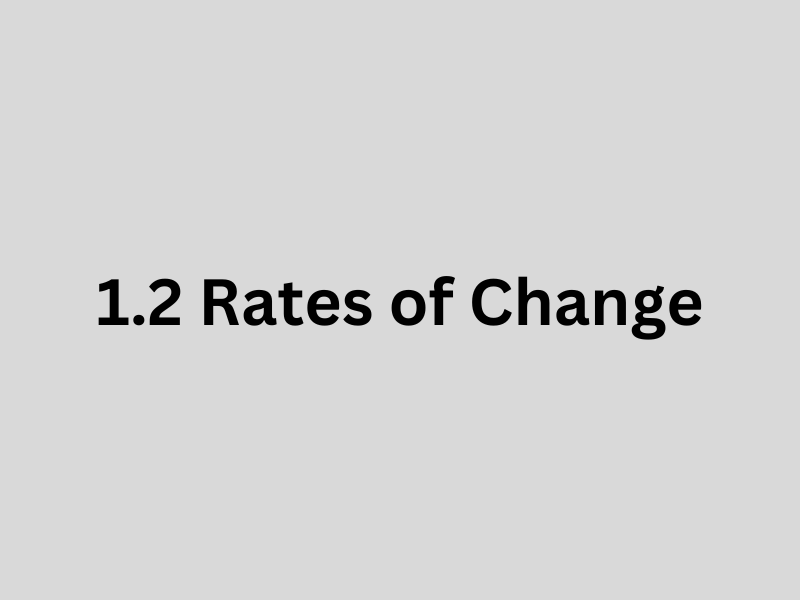Rates of Change in Linear and Quadratic Functions
The rate of change in linear and quadratic functions helps us understand how the output of these functions changes in relation to changes in their input values. Linear functions have a constant rate of change, which is the slope of the line. Quadratic functions have a variable rate of change, showing acceleration or deceleration in the change of the output values.
Examples
Example 1: Linear Function
Function: y = 2x + 3
This linear function has a constant rate of change (slope) of 2. This means for every one unit increase in x, y increases by 2 units.
Example 2: Linear Function
Function: y = -4x + 1
The rate of change (slope) for this linear function is -4. For every one unit increase in x, y decreases by 4 units, indicating a downward slope.
Example 3: Quadratic Function
Function: y = x^2
The rate of change for this quadratic function varies with x. As x increases or decreases from 0, the rate of change increases, indicating the parabola's widening.
Example 4: Quadratic Function
Function: y = -x^2 + 4
This quadratic function opens downward (because of the negative coefficient of x^2), and its rate of change shows deceleration as x moves away from the vertex at (0, 4).
Example 5: Linear Function in a Real-World Context
Equation: y = 50x
If y represents the total cost of buying x apples at a constant price of $50 per apple, the rate of change, or slope, is 50. This indicates that the cost (output) increases by $50 for every additional apple (input) purchased.
Packet
| Practice Solutions
| Corrective Assignments
| ||||||||
AP Learning Objectives:
1.3.A Determine the average rates of change for linear and quadratic sequences and functions.
1.3.B Determine the change of average rates of change for linear and quadratic functions.
Frequently Asked Questions: Rate of Change in Different Equations
What is the rate of change in a linear equation? How do you find it?
In the standard slope-intercept form \(y = mx + b\), the rate of change is simply the **slope of the line**, which is represented by the variable \(m\).
If the equation is not in slope-intercept form, you can find the rate of change by:
- Rearranging the equation into \(y = mx + b\) form to identify \(m\).
- Finding the coordinates of any two points \((x_1, y_1)\) and \((x_2, y_2)\) that satisfy the equation and using the slope formula: \( \frac{y_2 - y_1}{x_2 - x_1} \).
What is the rate of change in a quadratic equation? How do you find it?
To find the rate of change in a quadratic equation, you usually need to specify whether you want the:
- Average Rate of Change over a specific interval \([a, b]\). You find this using the formula \( \frac{f(b) - f(a)}{b - a} \), just like with any function. This gives you the average slope between the two points.
- Instantaneous Rate of Change at a specific point \(x=a\). This requires calculus and is found by taking the derivative of the quadratic function, \(f'(x)\), and evaluating it at \(x=a\). The derivative of \(y = ax^2 + bx + c\) is \(y' = 2ax + b\). Evaluating this at a specific point gives the instantaneous rate of change at that point.
What does the rate of change tell you about the graph of an equation?
- A **positive** rate of change indicates the graph is increasing (sloping upwards).
- A **negative** rate of change indicates the graph is decreasing (sloping downwards).
- A rate of change of **zero** indicates the graph is momentarily flat (horizontal).
- A **larger absolute value** of the rate of change indicates a steeper slope (faster change).




